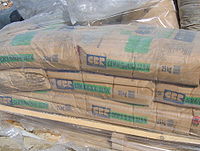
Photo from wikipedia
High-temperature oxidation behavior of molten Mg-Nd-Zr in the pyrolysis atmosphere of resin-bind sand mold was investigated. The results showed that pouring temperature higher than 1023 K would sharply increase the… Click to show full abstract
High-temperature oxidation behavior of molten Mg-Nd-Zr in the pyrolysis atmosphere of resin-bind sand mold was investigated. The results showed that pouring temperature higher than 1023 K would sharply increase the ignition risk of melt in mold. The oxide formed on Mg-Nd-Zr melt below 973 K consists of two layers: mainly MgO for outer layer; mixture of MgO and Nd2O3 for inner layer. The inner oxide mixture layer played an essential role in the protection of Mg-Nd-Zr matrix. Based on the experimental results and thermodynamic analysis, the oxidation process containing three stages was proposed. Nd- and Zn-enriched zone was found at the subsurface of oxide scale, without the enrichment of Zr. DICTRA calculation results indicated that this phenomenon was caused by the depletion of Mg and up-hill diffusion of Zr. Thus, Zr showed limited protection to the melt in long-term oxidation.
Journal Title: Journal of Materials Engineering and Performance
Year Published: 2019
Link to full text (if available)
Share on Social Media: Sign Up to like & get
recommendations!